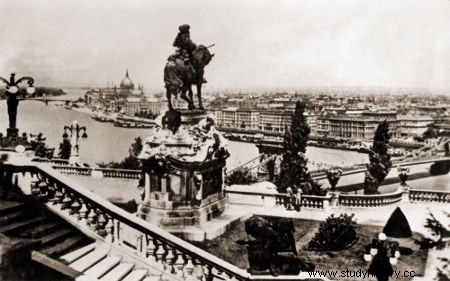
The Siege of Budapest It took place at the turn of 1944 and 1945 and was one of the great battles that took place during the march of Soviet armies towards Germany in World War II. The conflict in that city happened simultaneously with another important confrontation of the war, the Battle of the Bulge , and was considered by historians to be an early demonstration of what Berlin would face months later.
World War II during the siege of Budapest
The Soviet siege of Budapest took place at the moment of greatest weakness for the German army, which was accumulating the greatest losses. Historian Max Hastings reports that, in the first few months of 1945, around 1.2 million German soldiers died for the sole purpose of containing the advance of Allied (Soviet, American and British) troops |1 | .
The Nazi leadership encouraged the population to show bravery and resistance to the Allied advance, however, these demonstrations had not had the desired effect given the stage in which the conflict. Max Hastings claims that the sacrifice of the German people “had no purpose other than satisfying the commitment to self-immolation assumed by the Nazi leaders”|2| .
At the same time, German armies were still facing the withering advance of Soviet armies in Poland and the Balkans and the slow arrival of British and American armies from France. German defeat was evident and, at this point in the war, nothing could prevent it.
As the Soviet armies advanced, the catastrophe approached the Hungarian capital and, paradoxically, the population of the city showed no signs of concern about this siege, as recorded by Max Hastings . Nightlife remained active until just before the Soviet attack, and the city was decorated for Christmas 1944.
Stalin's wish was to promote the conquest of the city without battle, however, despite the requests of the German generals, Hitler ordered that Budapest not be abandoned and that it be stubbornly defended until the end of the day. last man. Thus, the Soviet siege of Budapest began on December 26, 1944.
A few days later, the Soviets began a heavy bombardment of Budapest with about a thousand cannons firing continuously for ten hours every day|3| . Such bombings were a common feature of Soviet attacks towards the end of the war (Berlin faced much worse bombing just a few months later).
Once the attack started, life for the civilians became hell, because with the city completely surrounded, escape was impossible. In addition, the attack resulted in a severe famine as a result of lack of food and water. It remained for the people to survive what they could and protect themselves from the bombings in basements.
Soviet attack on Budapest took militias from Arrow Cross (far-right group that commanded Hungary together with the Nazis) to carry out several pogroms against Jews. Pogroms were concentrated violent attacks against a particular ethnic and/or religious group. In the case of Budapest, these attacks against Jews resulted in the death or disappearance of 105,453 Jews|4| .
The official conquest of the city took place on February 11, 1945 , when the Hungarian defense forces surrendered the German forces and forced them to surrender. The Soviet victory led to a frenzy of looting and rape against the local population. Countless valuables in the city were looted and around 10% of Budapest women were raped , according to historian Antony Beevor|5| .
The result of the battle for Budapest was about 80,000 killed on the Soviet side and 40,000 killed between Hungarians and Germans|6| . Thousands of soldiers were taken prisoner by the Red Army.
|1| HASTINGS, Max. Hell:the world at war 1939-1945. Rio de Janeiro:Intrinsic, 2012, p. 619.
|2| Idem , P. 619.
|3| Idem , P. 622.
|4| Idem , P. 623.
|5| BEEVOR, Antony. The Second World War. Rio de Janeiro:Record, 2015, p.756.
|6| HASTINGS, Max. Hell:the world at war 1939-1945. Rio de Janeiro:Intrinsic, 2012, p. 627.
*Image Credits:Milleflore Images and Shutterstock
Take the opportunity to check out our video lesson related to the subject:
